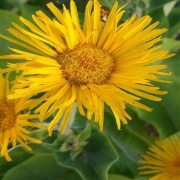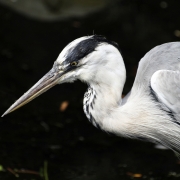Cardiff Castle’s Stained Glass
 ARTISTIC representations of the Odinist pantheon and Eddaic mythology are remarkably rare, especially when compared with the mass of paintings and sculptures depicting classical subjects. Thus the beautiful and inspired series of stained glass windows in the Winter Smoking Room of Cardiff Castle must be very nearly unique. Mani, Tyr, Odin, Thor, Frigga and Saetara are each the subject of one of the six windows of this lavishly and luxuriously decorated room in the castle’s bell tower, where the gentlemen guests of the 3rd Marquess of Buts would retire in Victorian fashion for postprandial cigars and brandy.
ARTISTIC representations of the Odinist pantheon and Eddaic mythology are remarkably rare, especially when compared with the mass of paintings and sculptures depicting classical subjects. Thus the beautiful and inspired series of stained glass windows in the Winter Smoking Room of Cardiff Castle must be very nearly unique. Mani, Tyr, Odin, Thor, Frigga and Saetara are each the subject of one of the six windows of this lavishly and luxuriously decorated room in the castle’s bell tower, where the gentlemen guests of the 3rd Marquess of Buts would retire in Victorian fashion for postprandial cigars and brandy.
The theme of this room’s decorations is time. Hence the choice of the Gods after whom the days of the week are named, Sunday being featured in the form of a central boss in the vaulted ceiling representing Sol. The name of each God is inscribed on the appropriate window, in the English version Woden in the case of the All-father (illustrated here), but in the Norse form for the other Gods.
Naturally, the style of portrayal is typical of the age. Woden’s winged helmet especially reflects the Victorian interpretation of the God. Thor is lovingly depicted with iron-mail, belt, and gloves, and a mallet-shaped hammer. Frigga bears an uncanny resemblance to the classical picture of Diana, holding her bow and arrows, and Saetara is interpreted as a Neptune like God of the sea endowed with a trident.
Lord Buts inherited the castle, a Roman foundation with Norman keep and walls covering an extensive site in the heart of the city in 1848, together with the immense wealth of the Buts (Crichton Stuart) family which included most of the coalfields of South Wales, and which allowed him to employ the architect William Burgea to restore and decorate the castle in the most magnificent manner. Both men cooperated closely in the design and Fred Weekes executed these stained glass windows.
Another Odinic feature of the castle’s decor is to be found in the library. The richly-carved and coloured mantlepiece depicts six scribes in national costume, each holding a tablet inscribed with various alphabets: the Egyptian hieroglyphs, the Phoenician, Hebrew, Greek and Roman alphabets, and the runic futhark. The blond, blue-eyed runic scribe, unlike the others, sits sideways with his arm covering and thus concealing most of his tablet, no doubt to indicate the secret nature of the runic mysteries.




Leave a Reply
Want to join the discussion?Feel free to contribute!